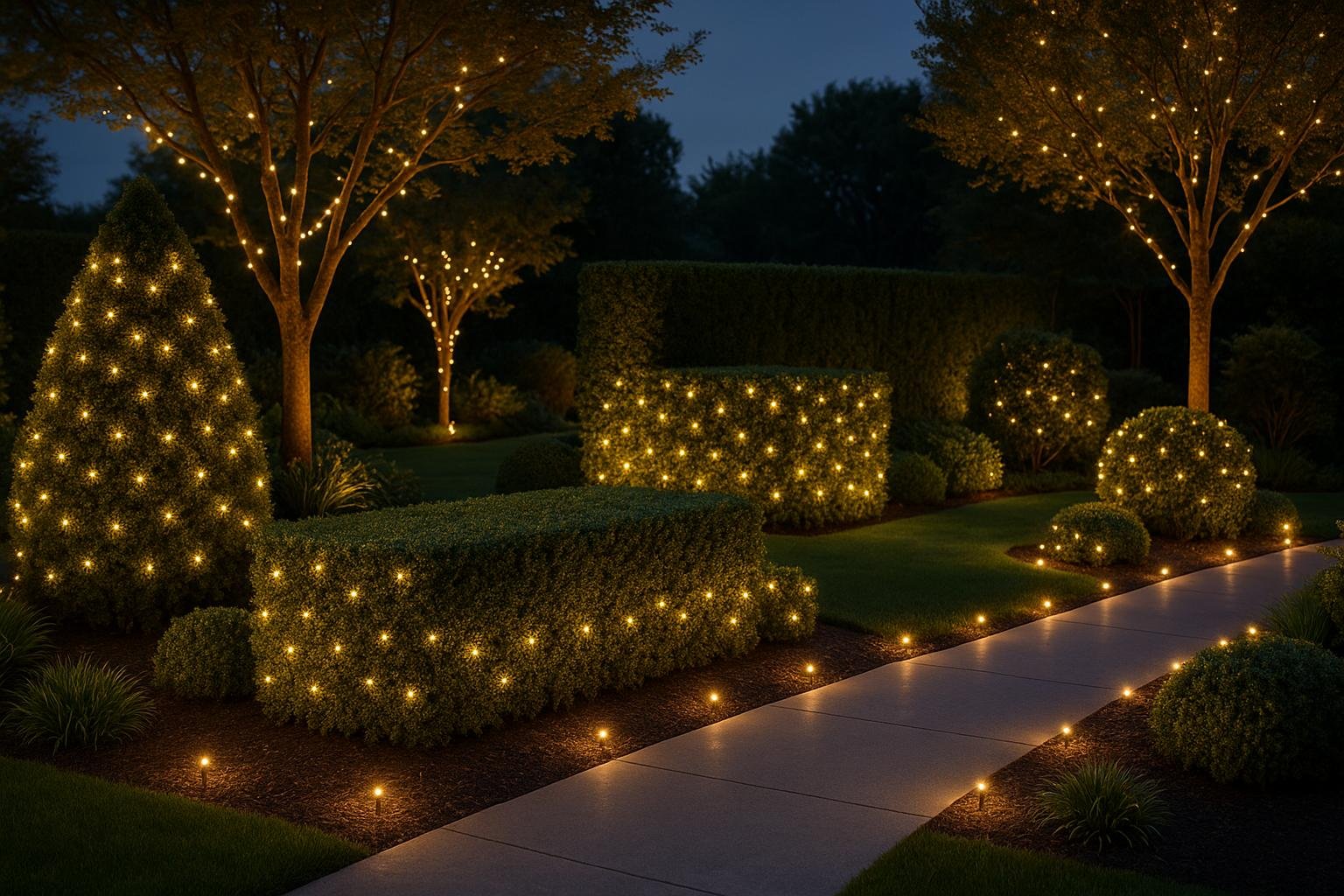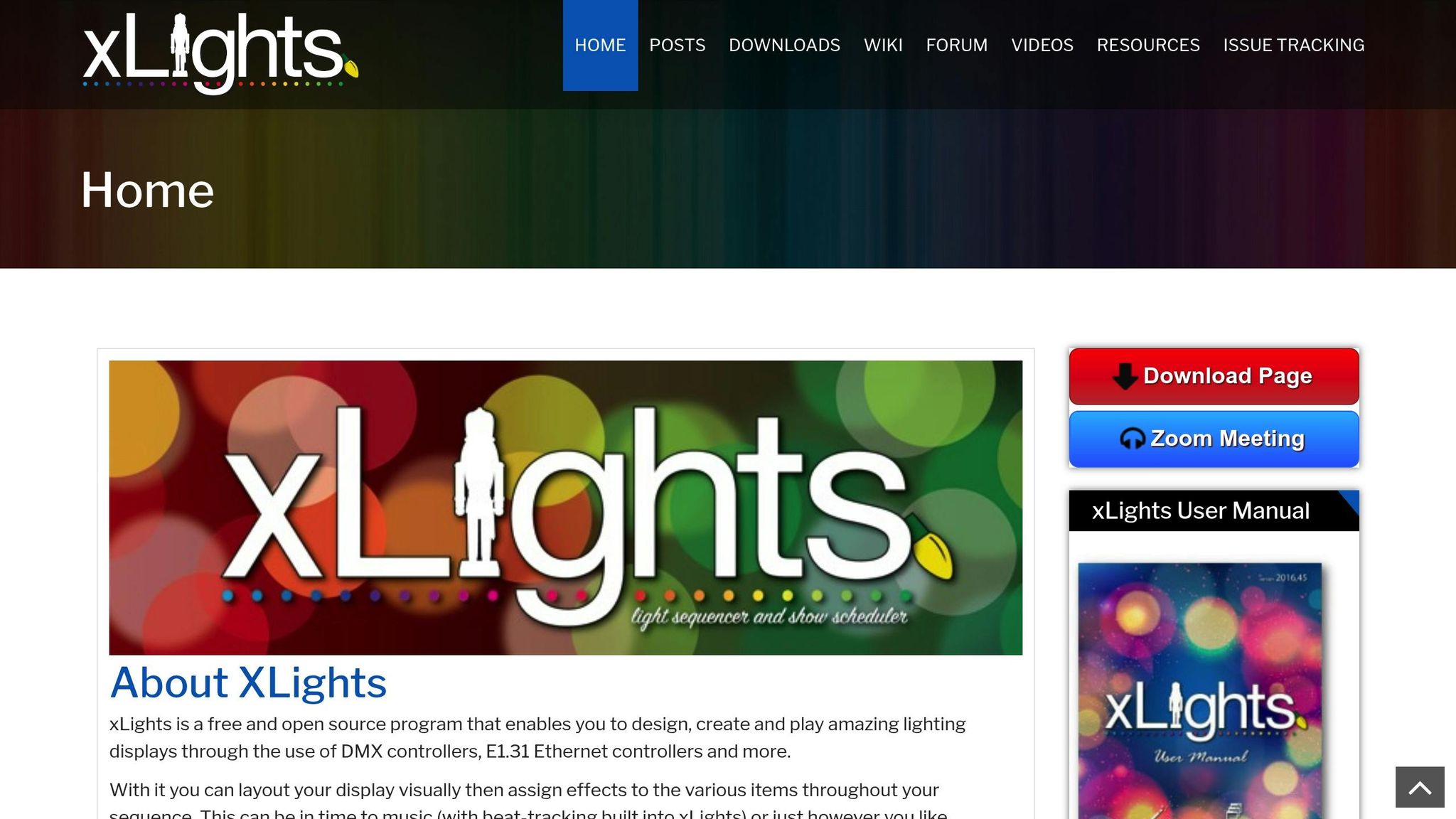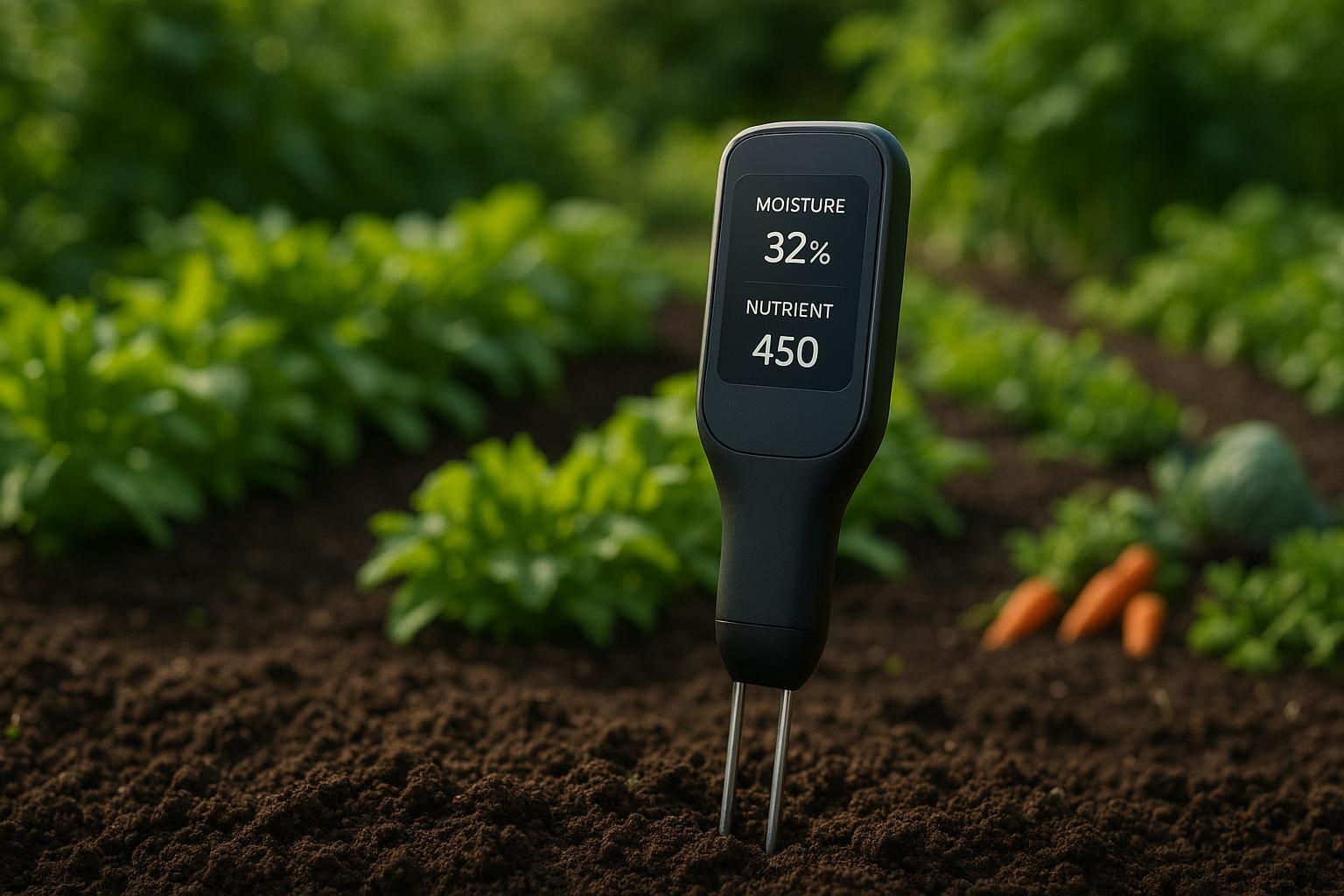AI Holiday Lighting for Landscapers

AI is transforming how landscapers approach holiday lighting. By analyzing property images, AI tools create custom designs that save time, reduce costs, and improve client satisfaction. These tools provide precise layouts, minimize material waste, and allow landscapers to handle more projects during busy seasons.
Here’s why AI-powered lighting tools stand out:
- Faster Designs: AI generates layouts quickly, eliminating manual site visits.
- Customization: Designs are tailored to property features and client preferences.
- Cost Savings: Accurate material estimates reduce waste and boost ROI.
- Improved Client Experience: Digital previews make it easier to finalize designs.
While manual methods offer personal interaction, they’re slower and less scalable. A combined approach - using AI for initial designs and manual expertise for adjustments - offers the best results for landscapers and clients alike.
How AI Will Change The Way We Use xLights


1. AI-Powered Holiday Lighting Tools
AI technology is changing the game for holiday lighting planning, making it easier than ever to create stunning, customized displays. By analyzing property photos, these tools can automatically generate layouts that consider architectural features, landscaping, and power sources. Let’s dive into how AI enhances design customization, boosts efficiency, improves cost management, and elevates client satisfaction.
Design Customization
AI lighting tools take personalization to the next level. They analyze key architectural features like rooflines, columns, and entryways, suggesting specific lighting placements that highlight a property’s unique characteristics. These tools also consider the overall style of the property, recommending lighting patterns that complement its aesthetic.
Most platforms come with extensive libraries of lighting effects and color schemes, allowing landscapers to experiment with different combinations virtually. This means no guesswork - designs can be tested and refined before any materials are purchased or installations begin.
For users of platforms like AIGardenPlanner, there’s an added bonus: the ability to integrate seasonal lighting with permanent landscaping designs. This ensures that holiday displays blend seamlessly with existing garden layouts rather than clashing with them. The result? A cohesive, polished outdoor space that feels thoughtfully designed.
This level of customization doesn’t just enhance the overall design - it also sets landscapers up for smoother installations and scalable operations.
Efficiency and Scalability
One of the biggest advantages of AI tools is how they streamline the planning process. By analyzing uploaded property photos, these tools eliminate the need for time-consuming site visits and manual measurements. Designs are generated quickly, allowing landscapers to take on more projects during the busy holiday season.
Scalability is another key benefit. AI platforms make it easy to create multiple design options tailored to different budgets, from simple displays to elaborate setups. Automated material calculations further simplify the process, ensuring accurate ordering and minimizing waste.
This efficiency means landscapers can focus on delivering high-quality results while managing a larger number of clients - something that’s crucial during the holiday rush.
Cost and ROI
The cost of AI lighting software typically ranges from $50 to $300 per month, but the time and resources saved quickly justify the expense. With faster design processes, landscapers can handle more projects without increasing their workload.
Another major cost-saving factor is the reduction of material waste. AI tools provide precise measurements, helping landscapers order exactly what’s needed and avoid over-purchasing. This accuracy is especially important given the seasonal nature of holiday lighting materials, where surplus inventory can’t always be reused.
AI also supports premium pricing. When clients see detailed visualizations and receive comprehensive project plans, they’re often more willing to invest in higher-end lighting packages. The combination of reduced waste, time savings, and the ability to charge higher rates ensures a strong return on investment.
Client Satisfaction
AI tools don’t just make life easier for landscapers - they also enhance the client experience. Detailed digital designs give clients a clear picture of what to expect, reducing misunderstandings and ensuring the final installation meets their vision.
The ability to make real-time adjustments during client meetings is another game-changer. If a client wants to see how pathway lighting would look or prefers a specific color scheme, changes can be made instantly. This collaborative approach makes clients feel more involved and confident in the process.
Additionally, providing clients with detailed installation plans and material lists upfront builds trust. It positions landscapers as experts who go beyond basic service, offering a professional and transparent experience from start to finish. This attention to detail not only satisfies clients but also strengthens their loyalty for future projects.
2. Standard Holiday Lighting Methods
Traditional holiday lighting methods have been a staple in landscaping for years, offering a hands-on approach that emphasizes design flexibility and personal client interaction. While they may lack the advanced features of AI-powered tools, these methods remain a reliable choice for meeting design needs.
Design Customization
Traditional holiday lighting relies heavily on the expertise of landscapers and direct client collaboration. This process typically involves on-site visits, manual measurements, and the creation of custom designs through hand-drawn sketches or basic digital tools.
During site assessments, landscapers pay close attention to architectural and landscape features, identifying potential challenges like irregular rooflines or mature trees that might complicate installations. These observations feed into tailored design concepts, ranging from simple lighting outlines to intricate displays.
However, these methods are time-intensive. The manual nature of the process often slows down project timelines, and the limited detail in sketches or mockups can make it harder for clients to visualize the final result. This sometimes leads to revisions during or after installation, adding extra steps to the process.
Efficiency and Scalability
One of the biggest hurdles with traditional methods is their limited scalability, especially during the busy holiday season. Each project demands a significant investment of time, from site visits and measurements to creating custom designs. This limits the number of projects landscapers can take on during peak periods.
The timeline for completing a holiday lighting project often spans several days. This includes everything from the initial consultation and design work to client approvals, material procurement, and scheduling the installation team. Material estimates are often done manually, which can lead to over-ordering as a precaution. While this avoids delays, it can also result in excess inventory, tying up resources that might not be used immediately.
Cost and ROI
Traditional methods may save on technology costs, but they incur higher labor expenses. Instead of paying for advanced software, landscapers invest in tools like measuring equipment, basic design software, and transportation for site visits.
Labor costs account for a significant portion of the budget, covering everything from site assessments to custom design creation. Additionally, manual material estimation can lead to inefficiencies, such as over-purchasing supplies, which increases project costs.
Despite these challenges, personalized service often commands a higher price. Clients value the opportunity for direct interaction and detailed consultations, which can justify premium pricing for these services.
Client Satisfaction
A key strength of traditional holiday lighting methods is the personal connection they foster between landscapers and clients. Face-to-face consultations allow for real-time discussions, building trust and addressing concerns directly.
That said, the lack of detailed visualizations can sometimes lead to misunderstandings, requiring additional labor for revisions. Still, the personalized nature of these methods often results in strong, long-term client relationships. Many clients who start with holiday lighting services go on to hire landscapers for other projects throughout the year.
Communication for these projects is typically handled through phone calls, emails, or text messages. While this approach feels personal, it can sometimes lead to miscommunications or delays, especially when juggling multiple projects at once. This trade-off between personal interaction and efficiency is a hallmark of traditional methods.
sbb-itb-4d6a8dd
🚀 Ready to Reinvent Your Garden?
Join thousands of homeowners who have transformed their gardens using our AI design tool. Upload one photo to explore endless possibilities.
Get your AI garden designs →Pros and Cons
Let’s break down the strengths and weaknesses of AI-powered holiday lighting tools compared to traditional methods. For landscapers, choosing between these approaches often comes down to balancing efficiency with client interaction. Each method has its own perks and challenges.
AI-powered tools shine when it comes to speed and precision. They can generate detailed lighting designs in no time, complete with digital previews that help clients visualize the end result. This can cut down on revisions and streamline the process. However, these tools come with recurring software costs and a learning curve as users get accustomed to the technology.
Traditional methods, by contrast, excel in creating personal connections and offering hands-on flexibility. Face-to-face consultations allow for stronger client relationships and immediate design tweaks. But the downside? Manual tasks like measuring, sketching, and multiple site visits can be time-consuming, especially during the holiday rush.
Here’s a side-by-side look at the key differences:
| Aspect | AI-Powered Tools | Traditional Methods |
|---|---|---|
| Design Speed | Fast, automated generation | Slower, manual process |
| Visualization Quality | High-quality digital previews | Hand-drawn sketches |
| Scalability | Can manage multiple projects at once | Limited by manual workload |
| Cost Structure | Ongoing software fees | Upfront costs for tools and labor |
| Client Interaction | Remote consultations are possible | Relies on in-person meetings |
| Learning Curve | Requires time to master | Builds on existing skills |
| Revision Flexibility | Easy digital adjustments | Often needs extra site visits |
A blended approach could be the best of both worlds. Using AI for quick, accurate initial designs combined with traditional, in-person consultations for on-site adjustments can maximize both efficiency and client satisfaction. This sets the stage for a well-rounded evaluation in the conclusion.
Conclusion
The world of holiday lighting is changing fast, and AI-powered tools are becoming essential for professional landscapers aiming to stay ahead. Deciding when to use traditional methods and when to leverage AI can make all the difference in staying competitive.
AI tools bring speed and precision, enabling landscapers to take on more projects without compromising on quality. Features like digital previews help clients make decisions faster, cutting down on delays and streamlining the entire process.
These tools also make it easier to scale operations without dramatically increasing costs. By combining the accuracy of AI with the expertise of human creativity, landscapers can deliver exceptional results while maintaining their unique, personal touch.
For those new to AI, starting small - perhaps testing it on one or two projects - is a smart way to see how it impacts design quality, client satisfaction, and overall profitability.
As clients demand faster and more polished results, landscapers who adopt AI are better positioned for long-term success. Platforms like AIGardenPlanner offer powerful digital design tools to simplify planning and turn creative ideas into reality, making it easier than ever to balance efficiency with artistry.
FAQs
How does AI create custom holiday lighting designs from property photos?
AI leverages cutting-edge computer vision and deep learning to examine property photos, pinpointing details such as rooflines, windows, and landscaping features. By identifying these specifics, it creates customized holiday lighting designs that complement the property's architecture and outdoor areas.
The system also simulates different lighting styles and arrangements, ensuring the designs are not only eye-catching but also functional. This approach enables landscapers to provide tailored, high-quality lighting plans that impress clients and enhance the property's festive appeal.
What are the benefits of using AI tools alongside traditional methods for holiday lighting projects?
Using AI tools alongside traditional techniques for holiday lighting projects brings a range of benefits. For starters, AI simplifies the design process, offering quick, tailored lighting plans that take into account site details, climate factors, and client preferences. This efficiency gives landscapers more time to focus on the creative aspects of their work and delivering standout results.
AI also improves accuracy and personalization, helping create lighting displays that are not only visually appealing but also practical. On top of that, it supports energy efficiency and cost-effectiveness by optimizing resources, like incorporating energy-saving lighting options. Combining AI technology with hands-on expertise allows landscapers to deliver faster, more customized, and environmentally conscious holiday lighting services that leave a lasting impression on clients.
How can AI-powered tools improve holiday lighting services for landscapers and their clients?
AI-powered tools are transforming holiday lighting services by enabling tailored, dynamic, and automated displays that align seamlessly with client preferences. These tools can adjust to match specific themes, color schemes, and schedules, crafting a holiday experience that's both unique and unforgettable.
On top of that, AI improves safety, energy efficiency, and simplifies installation, helping landscapers save time and cut costs while achieving professional-quality results. By incorporating AI, landscapers can deliver creative lighting solutions that not only impress clients but also encourage loyalty and repeat business.
Related posts
Related Articles

AI Tools for Creating Low-Maintenance Plant Combinations
Explore AI tools that simplify garden planning by matching plants to your conditions, ensuring low-maintenance and visually appealing combinations.

Digital vs Traditional Garden Design: Pros and Cons
Explore the advantages and challenges of digital and manual garden design methods to find the best approach for your project.

10 Minimalist Garden Ideas for Small Urban Spaces
Transform small urban spaces into tranquil retreats with minimalist garden ideas that emphasize simplicity and smart design choices.

Ultimate Guide: How Long to Fill a Pool Calculator
Learn how to calculate the time it takes to fill a pool, factors affecting pool filling time, and using a pool filling time calculator for efficient planning and maintenance.

Top 7 Soil Sensors for Moisture and Nutrient Tracking
Explore the top soil sensors for monitoring moisture and nutrients, enhancing your gardening efficiency and plant health.

5 Solutions for Common Garden Design Challenges
Explore innovative solutions for common garden design challenges, from vertical gardens to AI-driven soil improvements and weather-smart planning.